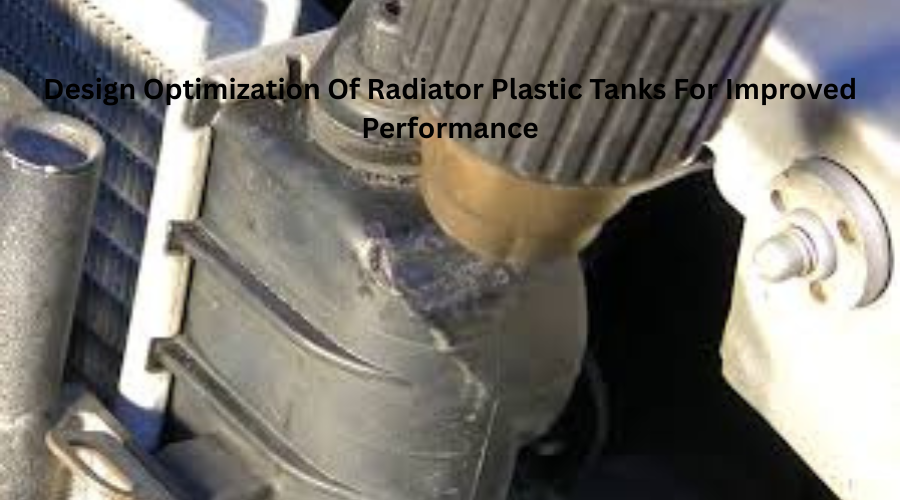Everything You Need To Know About Plastic Car Radiators
- linghangtechnology
- Mar 19
- 4 min read

When it comes to maintaining your car's engine cool, plastic car radiators play a crucial role. They are lightweight, cost-effective, and highly efficient in dissipating heat. Many car manufacturers have transitioned from traditional metal radiators to plastic ones due to their superior performance and affordability. Whether you're a car enthusiast, mechanic, or just someone looking to replace a radiator, understanding how plastic radiators work, their benefits and maintenance tips can be incredibly valuable. Additionally, if you're looking for parts in bulk, you might be interested in a bulk auto radiator plastic tank, which can help with repairs and replacements at a lower cost.
What Are Plastic Car Radiators?
A plastic car radiator is a heat exchanger designed to cool down the engine by heat removal from the coolant that circulates through it. These radiators are made of a combination of plastic and aluminum, with the core typically consisting of aluminum tubes and fins, while the tanks and other components are plastic.
This hybrid construction makes plastic radiators more lightweight and corrosion-resistant, which contributes to their longevity. However, they also require careful handling as plastic components may become brittle over time due to heat exposure.
Benefits of Plastic Car Radiators
Plastic radiators offer several advantages over traditional copper-brass or all-aluminum radiators. Some of the most notable benefits include:
1. Cost-Effective
One of the main reasons manufacturers prefer plastic car radiators is their affordability. Plastic is more affordable to produce than metal, making these radiators a budget-friendly choice for car owners looking for replacements.

2. Lightweight Construction
Plastic radiators are much lighter than their metal counterparts. This minimizes overall vehicle weight, leading to improved fuel efficiency and better performance.
3. Corrosion Resistance
Unlike metal radiators that can rust over time, plastic does not corrode. This makes plastic radiators more durable in the long run, especially in humid or salty environments.
4. Efficient Heat Dissipation
Despite being partially plastic, these radiators are highly efficient at dissipating heat due to their aluminum cores. This ensures the engine remains cool even under extreme conditions.
5. Easier Manufacturing and Replacement
Since plastic radiators are easier to mold and produce, they are widely available in the market. Additionally, replacing plastic radiators is often simpler and less labor-intensive compared to metal ones.
Common Issues with Plastic Car Radiators
While plastic car radiators have many benefits, they also come with some potential downsides. Here are a few common issues car owners may face:
1. Cracks and Leaks
Over time, the plastic components of the radiator can become brittle due to heat cycles. This may lead to cracks and coolant leaks, which can cause overheating.
2. Limited Repair Options
Unlike metal radiators that can be soldered or welded, plastic radiators are harder to repair. Most mechanics recommend replacing a damaged plastic radiator rather than attempting to fix it.
3. Heat Sensitivity
Plastic components are more sensitive to extreme heat. If the engine runs too hot, the radiator's plastic tanks may deform, leading to malfunction.
How to Maintain a Plastic Car Radiator
Diligent management can extend the durability of your plastic car radiator and prevent costly repairs. Here are some essential maintenance tips:
1. Regular Coolant Flushes
Flushing the coolant system every 30,000 to 50,000 miles helps prevent buildup and keeps the radiator functioning properly.
2. Check for Leaks and Cracks
Inspect the radiator regularly for signs of leaks, cracks, or warping. Addressing small problems early can prevent major problems.
3. Keep the Cooling System Clean
Ensure there are no barriers blocking airflow to the radiator, such as dirt, leaves, or debris. A clean radiator works more efficiently.
4. Use the Right Coolant
Always use the manufacturer-recommended coolant for your vehicle. The wrong type can cause deterioration or damage to the radiator.
5. Monitor Engine Temperature
Keep an eye on the heat detector while driving. If you notice overheating, check the radiator and coolant levels immediately.
When to Replace a Plastic Car Radiator
Knowing when to replace your radiator is crucial for keeping your engine in optimal condition. Here are some signs that indicate it's time for a new radiator:
Coolant leaks around the radiator
Overheating engine despite sufficient coolant levels
Visible cracks or warping on the plastic tanks
Frequent need to refill coolant
Rust or debris buildup inside the radiator
If you notice any of these signs, it's best to replace your plastic radiator as soon as possible to avoid further engine damage.
Conclusion
Plastic car radiators have become the industry standard due to their affordable cost, lightweight construction, and corrosion resistance. While they come with some drawbacks, such as heat sensitivity and repair limitations, their overall benefits make them a reliable choice for most modern vehicles. By following proper maintenance tips and recognizing the signs of failure, you can ensure your radiator continues to perform efficiently. Whether you're a car owner looking for a replacement or an auto parts dealer considering bulk purchases, understanding the advantages and challenges of plastic radiators can help you make a well-researched choice.
FAQs
1. Are plastic car radiators better than metal ones?
Plastic radiators are more affordable, lightweight, and corrosion-resistant than metal radiators. However, they are less durable and harder to repair.
2. How long do plastic car radiators last?
On average, a plastic car radiator lasts 8 to 10 years, depending on servicing and travel conditions.
3. Can you repair a cracked plastic radiator?
While some temporary fixes like epoxy or plastic welding exist, it's usually best to replace the radiator for long-term reliability.
4. What causes plastic radiators to crack?
Repeated heat cycles, extreme temperatures, and pressure buildup can cause molded parts to become brittle and crack over time.
5. How do I know if my radiator needs to be replaced?
If you notice coolant leaks, overheating, visible cracks, or frequent coolant loss, it's time to consider replacing your radiator.






Comments